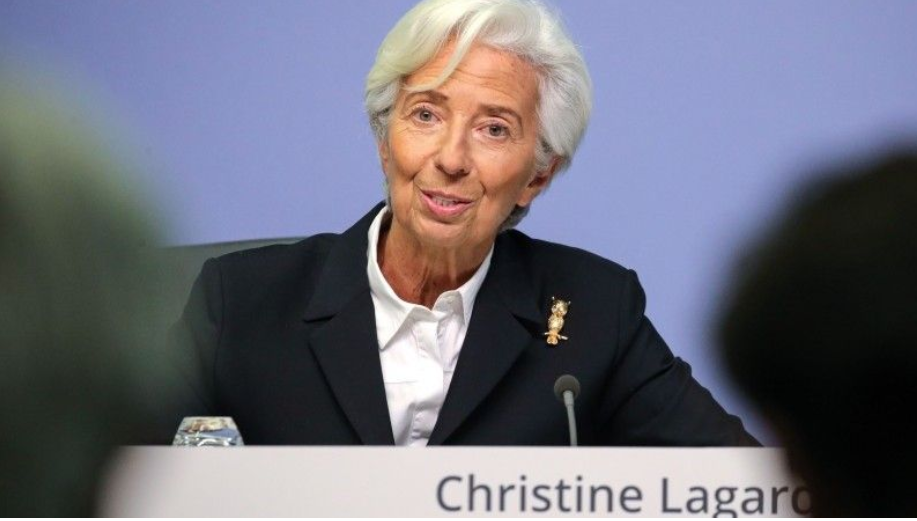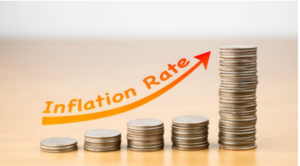I går kom ECB endelig med rimeligt klare signaler om pengepolitikken, dvs. om obligationsopkøbene. ECB vil snart begynde at neddrosle dem. En beslutning vil blive truffet i december. Men en neddrosling vil være moderat. Opkøbene har indtil foråret været på 60 milliarder euro pr. måned, men så blev de hævet til 80 milliarder euro, og derfor kan en neddrosling blot blive at vende tilbage til det mere normale niveau. Der er udsigt til, at ECB vil være mere fleksibel i sin neddrosling. ECB har samtidig hævet forventningerne til en vækst på 5 pct. i år, så væksten kommer på niveauet fra før pandemien i det fjerde kvartal. Inflationen ventes at blive under 2 pct. på mellemlangt sigt. Alt i alt er der udsigt til en rimeligt positiv udvikling.
The lady isn’t tapering (but she will soon)
ECB View: Slowdown in purchases in Q4, tapering announcement in December –
The Governing Council announced earlier today that it will ‘moderately lower (the) pace of net asset purchases under the pandemic emergency purchase programme (PEPP) (compared to) the previous two quarters’.
This is in line with our own and market expectations. Indeed, the market reaction suggests that this decision was priced in, and if anything, there is a little relief that this represents a slowdown rather than a taper.
Indeed, in the press conference, President Christine Lagarde quipped that ‘the lady isn’t tapering’, apparently drawing on the spirit of Margaret Thatcher. The decision was based on the view that favourable financing conditions can be maintained at a lower pace of purchases and indeed likely reflects the fall in weighted sovereign yields over the summer. The decision was taken unanimously by the Governing Council.
Net purchases early this year were running at a roughly EUR 60bn pace, while the step up period saw a pace of around EUR 80bn (excluding August which was impacted by the holidays). So the communication could suggest purchases settle somewhere towards the lower end of that range, with variability depending on developments in financial conditions.
Forward guidance on policy rates and APP remained unchanged. The guidance on rates combined with the subdued inflation outlook (see below) suggests policy rates could remain on hold through 2024.
The APP guidance currently suggests that APP will continue until shortly before the ECB raises policy rates. The last meeting account signalled that the APP guidance will be reviewed and hence could still change (although this was not repeated by the ECB President at the press conference). In any case APP will likely last long after PEPP ends.
We expect the PEPP to end in March 2022, with announcement of that coming at the December meeting. Ms. Lagarde put a lot of emphasis on the December meeting, noting that this is when the PEPP would be discussed ‘comprehensively’. The ending of the PEPP reflects progress with vaccinations, which have allowed a more sustainable opening up of economies. This will allow the economy to return to its pre-crisis level by the end of the year.
The impact of the ending of the PEPP on financial markets should be more than offset by continued accommodative conditions from policy rates and the PEPP. Market expectations for rate hikes still seem too aggressive in our view, and the ECB’s forward guidance and the fall back in inflation next year should see these expectations being reigned in.
The APP will also likely be ample. The ECB could keep the current format of a set specific amount of monthly purchases until some inflation criteria are met, but perhaps at a higher monthly pace (say EUR 40bn rather than 20bn).
However, it could also opt for more flexibility, by announcing an end to the fixed monthly amount, which would be replaced by an envelope that could be allocated based on circumstances over a fixed period. The latter could prove to be an attractive option that could receive support from both doves and hawks.
ECB still expects inflation to be well below the target in the medium term –
Meanwhile, the ECB published its updated Staff Macroeconomic Projections. The central bank’s forecast for GDP growth in 2021 was revised higher (to 5.0%, up from 4.6% in its June forecasts), which mainly results from higher than expected growth in Q2 and upward revisions of earlier quarterly growth numbers.
As a result of the 2021 growth number, the level of GDP will return to its pre-pandemic level (i.e. 2019Q4) in the final quarter of this year, which is in line with our own forecasts. The ECB’s projections for economic growth in 2022 fell slightly (to 4.6% from 4.7%), while the number for 2023 was unchanged at 2.1%.
These forecasts imply that by the end of 2023, the level of GDP still will be somewhat below the level it would have reached if it had expanded at the trend rate since 2019Q4. This means that spare capacity in the economy generally and the labour market will remain over the next two years.
This is also relevant for the ECB’s inflation forecasts, which remain well below the 2% target in the medium term. The ECB’s forecast for 2021 was revised higher to 2.2%, up from 1.9%, that for 2022 to 1.7% from 1.5% and that for 2023 to 1.5% from 1.4%.
According to Christine Lagarde, underlying inflationary pressures have edged up and core inflation (headline excluding food and energy) will rise over the medium term, but only gradually. Moreover, she mentioned that inflation will remain well below the (symmetric) 2% target in the medium term.
This is reflected in the central bank’s projections for core inflation, which is expected to be 1.3% in 2021, 1.4% in 2022 and 1.5% in 2023. This is consistent as well with its projection of very subdued unit labour cost growth over this period. At the same time, like us, the ECB judges that the factors currently driving inflation are of a temporary nature. We think that underlying inflation could undershoot the ECB’s projections over 2022 and 2023.












